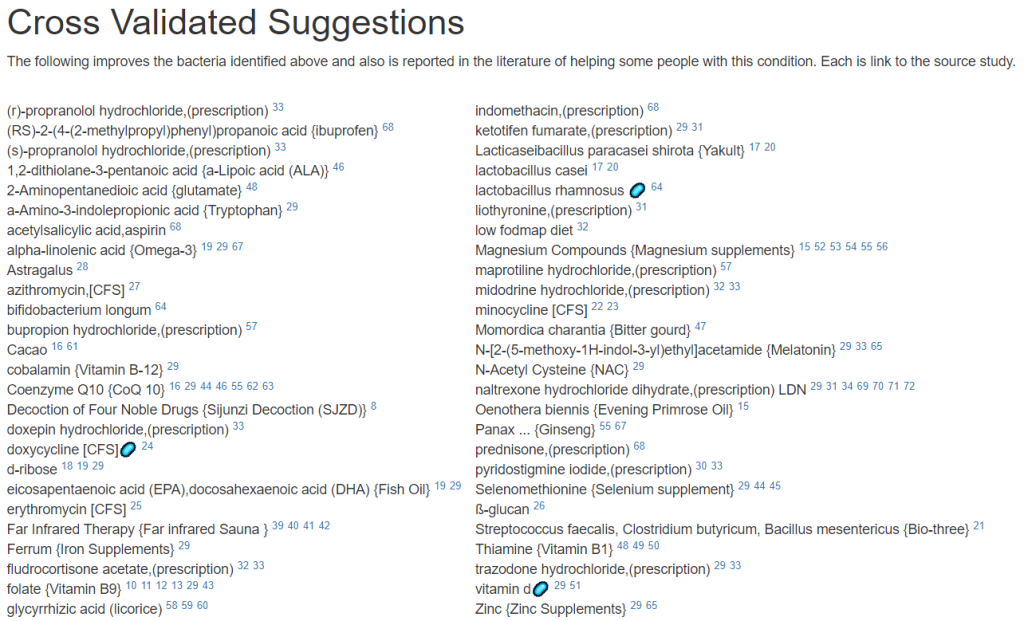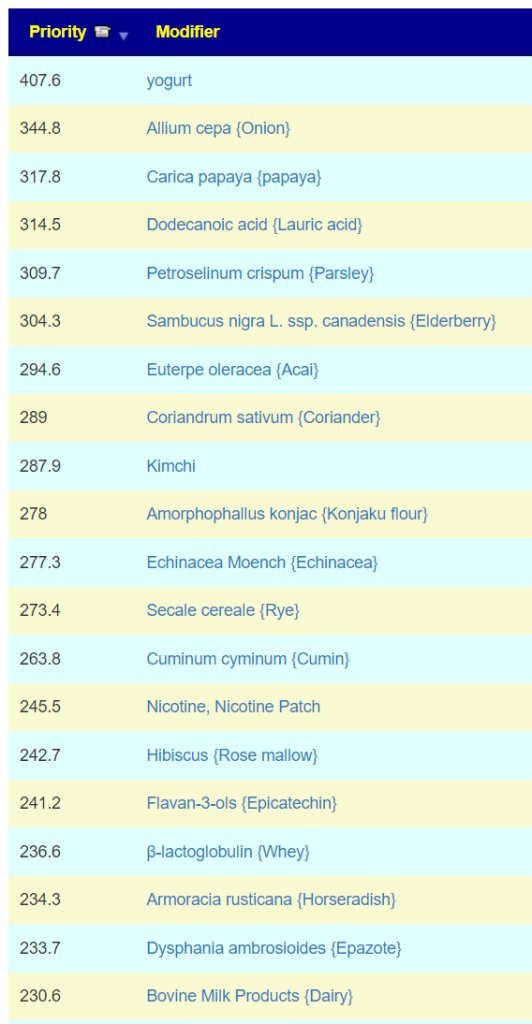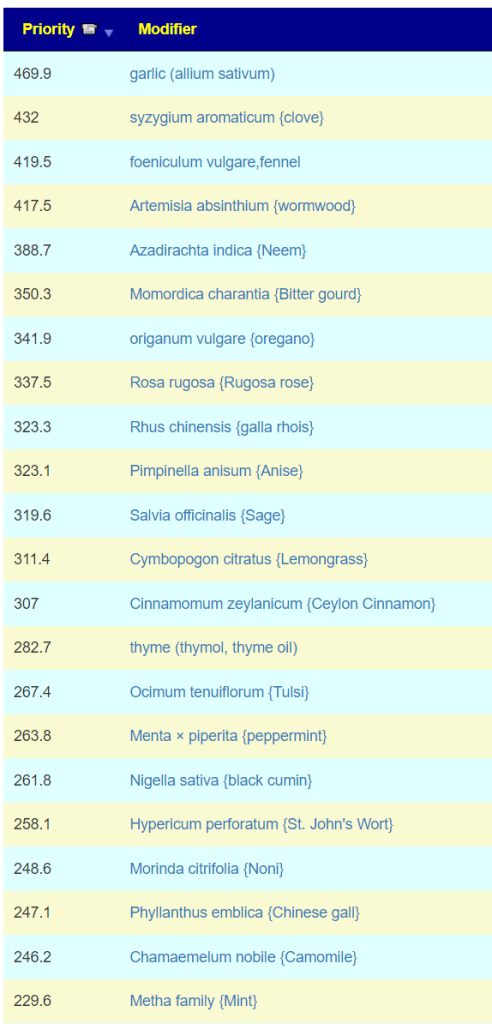Back Story
I have been struggling with my medical symptoms. After over a year of persistent fatigue, I found your blog, and would like some additional help with determining the issues in my gut microbiome.
I had mono(Epstein–Barr virus – EBV ) in high school. I have had COVID once, in December of 2021.
In November of 2022, I started feeling a bloating-like symptom in my stomach. I saw multiple doctors, and had two endoscopies and a colonoscopy done. Nothing was found. I was diagnosed with IBS, and told to take a probiotic. I took it (GBI 30, Bacillus Coagulans).
The very next day, and ever since, I have been dealing with chronic fatigue, along with associated symptoms such as headaches and joint pain (mostly in the legs).
I’ve seen a variety of doctors including GPs, GIs, a rheumatologist, and a naturopath. None have been of very much help. One GP thought I may have undiagnosed lyme due to the inaccuracy of lyme tests, so I took a four week course of doxycycline, which did not make me feel any better or worse. I have tried gluten free, dairy free, and added sugar free diets, none of which helped either. Various supplements from my naturopath also did nothing.
This is an interesting scenario. Typically the ME/CFS associated event is an infection, a vaccination, or antibiotic use. A probiotic being a trigger does fit the model — but definitely an edge case.
Analysis
Looking at forecast symptoms, we see a lot of ME/CFS symptoms (DePaul University Fatigue Questionnaire was written for ME/CFS patients). A few is shown below.

I am going to assume the ME/CFS is indeed a diagnosis and thus go to the cross validated suggestions. I am going to restrict to only ME/CFS-Long COVID. First, we see a lot of bacteria shifts match that reported in the literature for ME/CFS

We also get a lot of suggestions for things suggested by the microbiome shifts and also reported in published studies to help ME/CFS.

My reading of this reader is that antibiotics or prescriptions items are unlikely to be available.
I then proceeded to [Just give Me Suggestions] so we can get priorities for the above.
- All of the top items are a mountain of antibiotics (From a priority of 908 down to 433 when the first probiotic shows up). If the following does not make progress, the reader may wish to revisit that option.
- My usual advice is to keep to items in the top 50%. Ignoring antibiotics, our preferred range is 210 to 433. Items below that are more iffy…
Probiotics
Many of these are related (L. Casei, L Paracasei, Yakult). Dosages should be around 50 BCFU with weekly rotation (i.e. do one each week and then move on to the next one).

I then checked to see where Bacillus Coagulans ( renamed to Heyndrickxia coagulans) sit, and it is a definite avoid. B Coagulans triggering ME/CFS is very viable. Using KEGG, I hit the rare case of no probiotics being calculated.

Other Items
There are just two items in range
- Vitamins
- Amino Acid and similar
- Diet Style
- Flavonoids, polyphenols etc
- {Luteolin}
- {Nobiletin (oranges and lemons)}
- diosmin {diosmin}
- Prebiotics
- Acacia senegal {gum arabic}
Foods
We have a pretty rich list of foods. Rye and whole grain above go together strongest (Oats and Barley are weaker – WHEAT is a to be avoided). My suggestion for Rye is 100% Rye bread (NOT what is often labelled rye bread – a mixture of wheat and rye flour). Below is what I personally use (Amazon US) (Amazon UK equivalent)


Herbs and Spices
Again, a long list — often these have similar profiles to antibiotics, hence a lot of antibiotics suggestions often have a long list here. My own preference would to do:
- 1 Week of Neem, then
- 1 Week of Wormwood, then
- 1 Week of Tulsi, then
- 1 week of Oregano oil, then
- etc

Wait, there’s more! Stuff to reduce or avoid
Lowest is -631, so items between 315 and 630 are definite avoids. All seaweeds related products
- Ulmus rubra {slippery elm}
- High glycemic diet {High-sugar diet (HSD)}
- fasting
- Pulses, Beans
- resistant starch
- Outer Layers of Triticum aestivum {Wheat Bran}
- Human milk oligosaccharides (prebiotic, Holigos, Stachyose)
- Polydextrose {polydextrose}
- steviol glycosides {Stevia}
- laminaria digitata {Oarweed}
- Pulvis ledebouriellae compositae {Bofutsushosan}
- 2-Amino-5-(carbamoylamino)pentanoic acid {Citrulline}
- Cholestyramine,Colesevelam,Colestipol {Bile Acid Sequestrant}
- Traditional Mediterranean diet {Mediterranean diet}
- Mycotoxins {Home Dampness}
- Laurencia tristicha {Marine red algae}
- Macrolide – one family of antibiotics
- 5,6-dihydro-9,10-dimethoxybenzo[g]-1,3-benzodioxolo[5,6-a]quinolizinium {Berberine}
- Probiotics are lower, but a few samples:
- bifidobacterium adolescentis, Bifidobacterium catenulatum
- E. Coli probiotics
- B Coagulans
See the full list and for anything that is negative and a regular part of your life, consider reducing or eliminating.
Food Site Menu
Since the first draft of this post, I have reconnected the food site. I have used the Novice suggestions nutrients below.
 |  |
| Grape Chicory Black elderberry Broad bean x 2 Green / Oolong Tea Pecan nut Black chokeberry Blackberry, raw Abalone Lime Orange (not juice) Lentil Pea Chickpea Lima / Kidney Bean Rye, whole grain flour (i.e. 100% Rye bread) | Pomegranate, Chicory Burdock Vinegar x 2 Peanut Oil, linseed or flaxseed Oil, sunflower, linoleic, (approx. 65%) Oil, grapeseed Caterpillar, roasted, Iron fortified foods Oat, whole grain flour Tahini, sesame seed pulp Rhubarb, stalk, raw Spinach, Wine [Red] |
Cross Validated Suggestions for this Sample
Bottom Line
I favor Dr. Cecile Jadin approach of regular rotation and anything that inhibits or kill bacteria (antibiotics, herbs, spices and probiotic). This reduces the odds of the bacteria adapting around the mechanism that inhibits it. Always start with a low dosage and increase every second day — holding steady if die-off or other reactions appear. Once that has faded, resume the increase OR move on to the next item in the rotation.
Questions and Answers
- Q: Although I do now notice that when I try to get the results again (I am using the simple UI), I see it is giving me different recommendations. Is this due to some sort of shift in the data used, some sort of difference between the Simple UI and the old UI, or am I misunderstanding?
- The site is live data. There are several dimensions:
- Adding new studies — recently I have been adding 20-30 per day. More studies should mean better suggestions
- Associations of Bacteria to Symptoms are recomputed about once a week.
- Thresholds for the reference range is computed about once a week.
- The goal is to give the best suggestions at the time it is executed. I am aware that many people want absolute consistency from month to month; I am sorry but I prefer to give the best suggestions based on most current research.
- The site is live data. There are several dimensions:
- Q: It’s interesting to see just how much of a shift has occurred- prescription antibiotics have gone from the number one recommendation, far outpacing everything else, to hardly on my top suggestions at all. That would make it easier for me to implement a plan, though, so I can hardly complain.
- That shift is because of more studies being added to the database. One sweet study reported dozens of bacteria shifts for each antibiotic. The Algorithm counts the number of desirable or undesirable shifts for a modifier (i.e. antibiotic, probiotic, herb). Before the addition of more studies, the counts were very high for some antibiotics. Many of the probiotics went from 3 studies to 40 studies with the new additions, so the net weight of the probiotic or other modifiers went up and thus the antibiotics slipped down the list.
- People can design algorithms in many manners — I tried many variations until I got one that had a strong cross-validation for ME/CFS (picked because I knew the literature well) and when I tested on a different condition, Nonalcoholic Fatty Liver Disease, I got 92% correct for substance to take and 83% correct for substances to avoid. In the machine learning/AI world those percentages are very, very respectable. Subsequent changes has been just increasing data volumes.
Postscript and Reminder
As a statistician with relevant degrees and professional memberships, I present data and statistical models for evaluation by medical professionals. I am not a licensed medical practitioner and must adhere to strict laws regarding the appearance of practicing medicine. My work focuses on academic models and scientific language, particularly statistics. I cannot provide direct medical advice or tell individuals what to take or avoid.My analyses aim to inform about items that statistically show better odds of improving the microbiome. All suggestions should be reviewed by a qualified medical professional before implementation. The information provided describes my logic and thinking and is not intended as personal medical advice. Always consult with your knowledgeable healthcare provider.
Implementation Strategies
- Rotate bacteria inhibitors (antibiotics, herbs, probiotics) every 1-2 weeks
- Some herbs/spices are compatible with probiotics (e.g., Wormwood with Bifidobacteria)
- Verify dosages against reliable sources or research studies, not commercial product labels. This Dosages page may help.
- There are 3 suppliers of probiotics that I prefer: Custom Probiotics , Maple Life Science™, Bulk Probiotics: see Probiotics post for why
Professional Medical Review Recommended
Individual health conditions may make some suggestions inappropriate. Mind Mood Microbes outlines some of what her consultation service considers:
A comprehensive medical assessment should consider:
- Terrain-related data
- Signs of low stomach acid, pancreatic function, bile production, etc.
- Detailed health history
- Specific symptom characteristics (e.g., type and location of bloating)
- Potential underlying conditions (e.g., H-pylori, carbohydrate digestion issues)
- Individual susceptibility to specific probiotics
- Nature of symptoms (e.g., headache type – pressure, cluster, or migraine)
- Possible histamine issues
- Colon acidity levels
- SCFA production and acidification needs
A knowledgeable medical professional can help tailor recommendations to your specific health needs and conditions.
Recent Comments